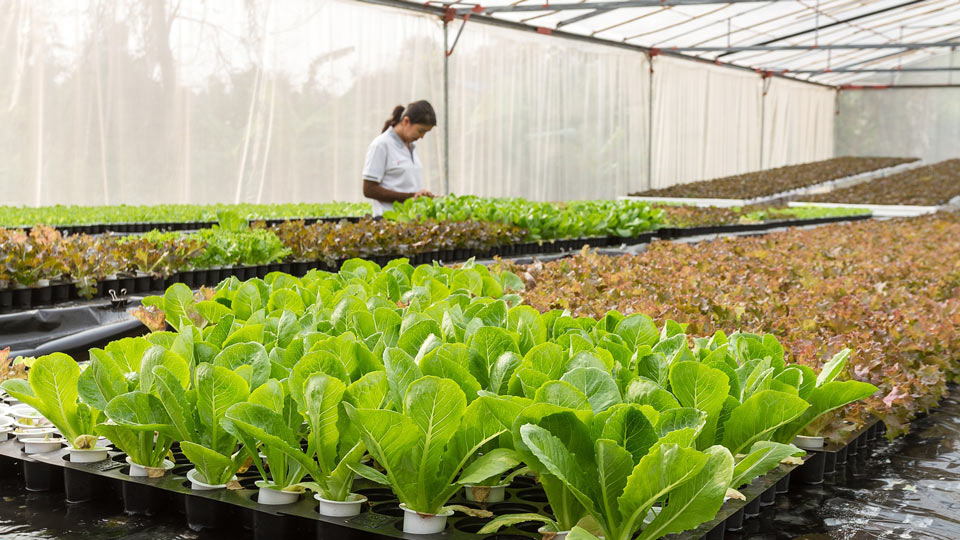Climate Change, Extreme Weather, and Your Food
If you’re a gardener, you probably noticed that some of your plants up and died during the recent heat wave in BC. Other plants might be struggling still due to drought, plant disease, or heat-loving pests. You’re not alone. High temperatures have been impacting farmers across BC and other parts of the country (including Alberta, Saskatchewan, and Manitoba).
Warmer temperatures and an earlier growing season may initially sound attractive, but heat waves, chronic drought, and extreme weather events can be incredibly detrimental to farmers. Poor harvests, oppressive working conditions, pest and disease outbreaks, and even total crop failure are all possibilities farmers today must grapple with.
It’s possible to adapt to these new growing conditions, but it can be challenging and costly to do so. Replanting a blueberry farm with a more heat-tolerant variety could cost between $15,000 to $20,000 per acre, with a three-year gap before the first harvest. A new irrigation system might be upwards of $300,000.
What does this mean for our food system? For food prices?
Canada is one of the largest agricultural producers and exporters in the world, and farming remains a critical part of our food system today. A healthy, thriving farming sector can help lessen our own reliance on food imports and bolster national food security while also allowing us to support local farmers and producers. Finding effective strategies to tackle climate change and adapt to changing growing conditions is just one part of protecting our food system.
It can be challenging to find ways to engage with issues like this, but there are ways that you can get involved: buy local or support farmers directly (when possible), learn about Canada’s national food policy, support community food organizations, and more.

Learn More
- The launch of the first ‘Food Policy for Canada – Everyone at the Table’ (Food Secure Canada) https://foodsecurecanada.org/first-national-food-policy-for-canada
- Investment in food security needed as COVID-19 emergency funding ends, advocates say (CBC News) https://www.cbc.ca/news/canada/british-columbia/vancouver-food-security-neighbourhood-food-networks-1.6076376
- BC Farm Fresh https://www.bcfarmfresh.com/
- BC Farmers’ Markets https://bcfarmersmarket.org/
- Community Food Centres Canada https://cfccanada.ca/
- Farmers for Climate Solutions https://farmersforclimatesolutions.ca/
- FarmFolk CityFolk https://farmfolkcityfolk.ca/
- Good Food Organizations https://goodfoodorganizations.ca/
- Vancouver Farmers Markets https://eatlocal.org/
- Vancouver Food Asset Map (Vancouver Coastal Health) http://www.vch.ca/public-health/nutrition/food-asset-map
- Young Agrarians https://youngagrarians.org/
- Agriculture and Climate Change (Climate Atlas of Canada) https://climateatlas.ca/agriculture-and-climate-change
- Reliance on exports (York University) https://foodpolicyforcanada.info.yorku.ca/backgrounder/problems/reliance-on-exports/
- More than a billion seashore animals may have cooked to death in B.C. heat wave, says UBC researcher (CBC News) https://www.cbc.ca/news/canada/british-columbia/intertidal-animals-ubc-research-1.6090774
- Special Report on Climate Change and Land (Intergovernmental Panel on Climate Change) https://www.ipcc.ch/srccl/chapter/chapter-5/
- Young B.C. farmers face uncertain future in keeping food local (CBC News) https://www.cbc.ca/news/canada/british-columbia/tomorrow-s-harvest-documentary-1.5200628
- Want to lower food insecurity rates? Experts say systemic change is needed (CBC News) https://www.cbc.ca/news/canada/newfoundland-labrador/food-insecurity-poverty-systemic-change-1.5873048
- COVID-19 Sparks Push to Improve BC’s Food Security (The Tyee) https://thetyee.ca/News/2020/04/15/BC-Food-Security-COVID19/
- Helping plants adapt to hotter climates will protect our food security (Canada’s National Observer) https://www.nationalobserver.com/2021/07/16/news/helping-plants-adapt-climate-change-food-security
- Seed Security https://thetyee.ca/Culture/2021/07/05/Garden-Flourishes-Someone-Saved-Seed/